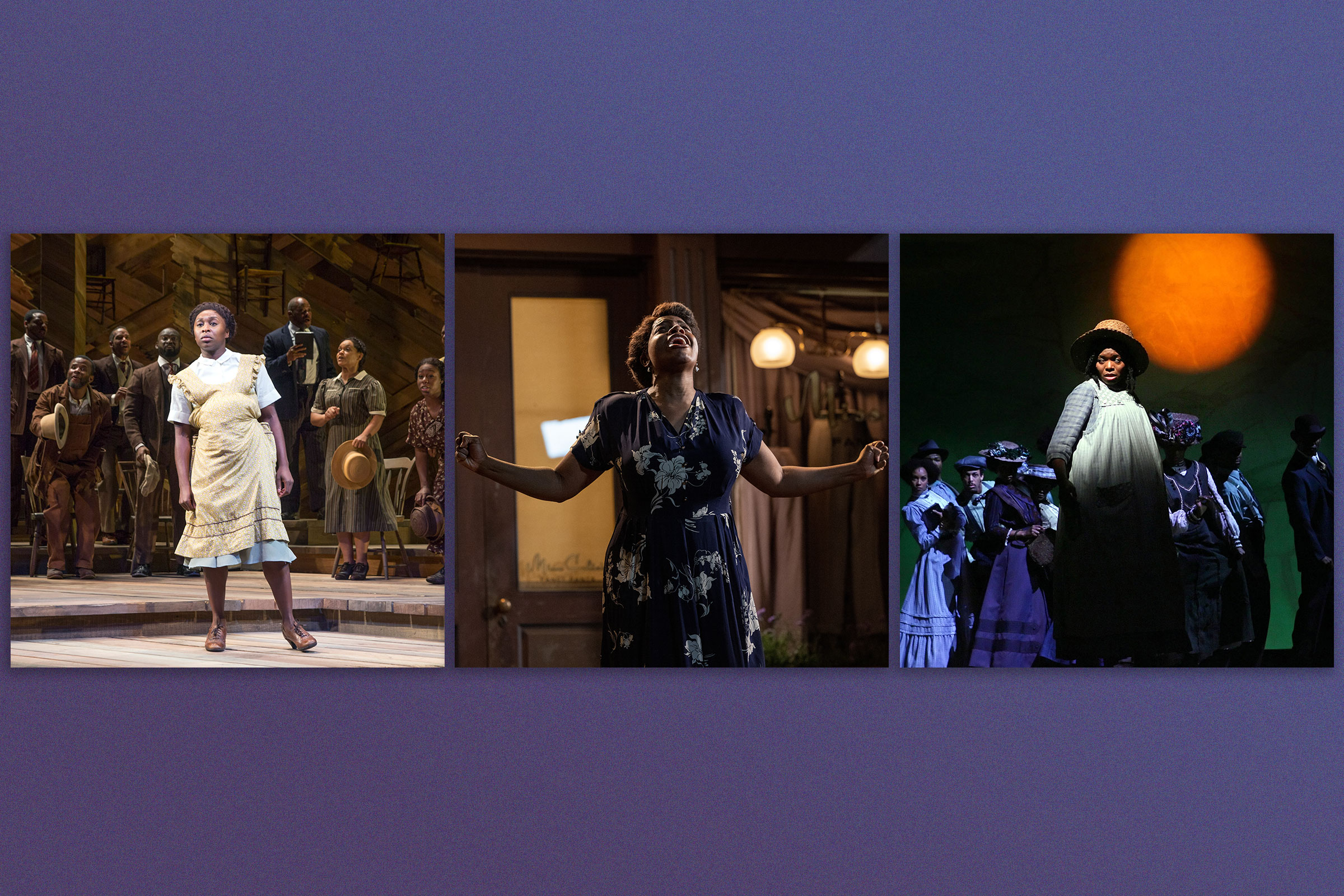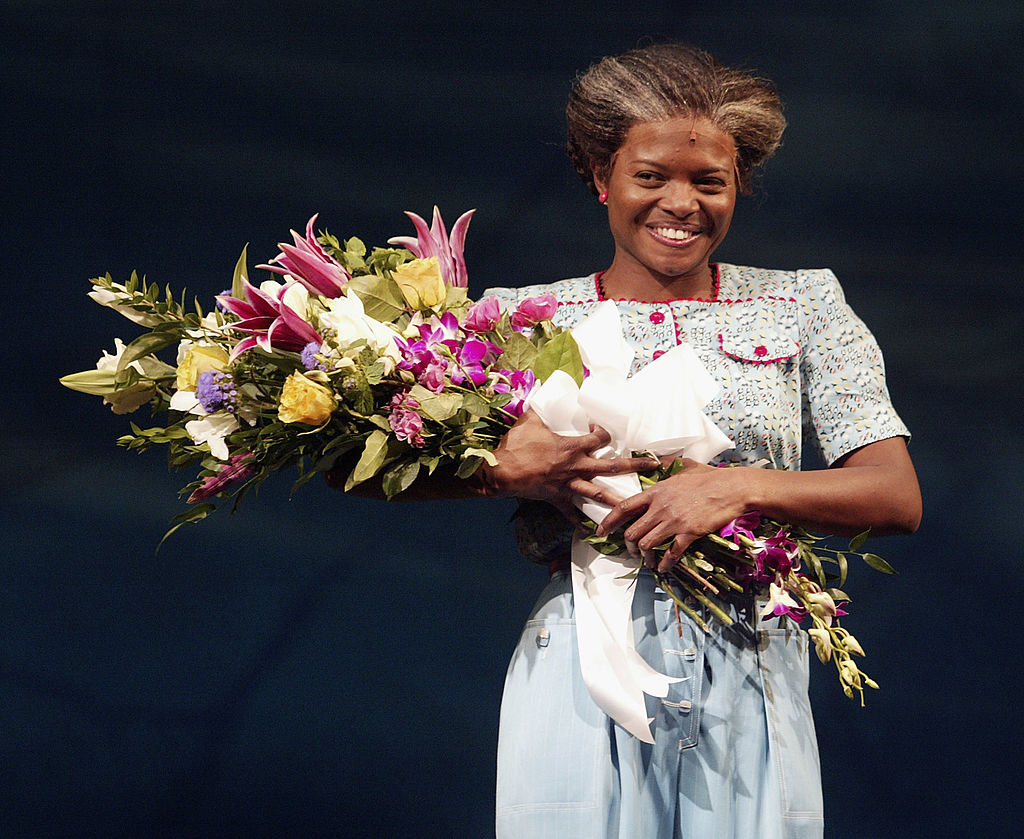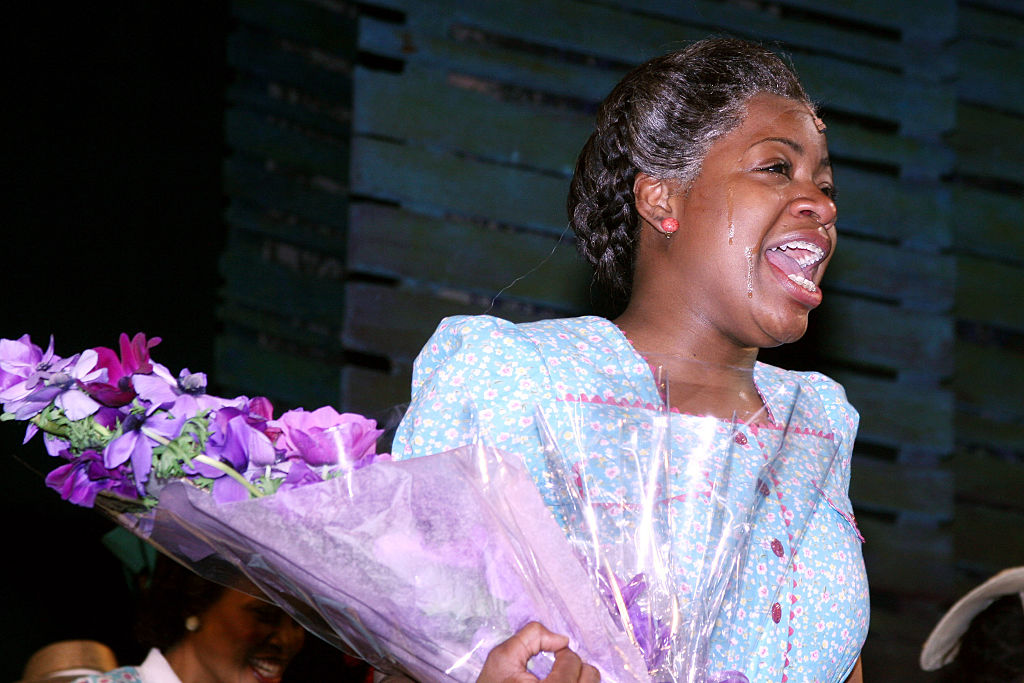
The song “I’m Here” from The Color Purple musical is not meant to be sung, but roared. It’s not meant to be heard but felt.
“I’m Here” is the climax of the musical. It reframes the protagonist Celie’s narrative from victim to a triumphant woman who has overcome adversity. Up to this moment, Celie has been told that no one loves her. But she begins life on her own in a shop that she owns and realizes that she’s been loved all along; now, she chooses to find that love in herself after going through hell and back searching for it elsewhere. The song marks a new beginning—Celie declares that she’s here, and boy, are you gonna hear her.
Alice Walker’s 1982 novel breathed life into the characters of Celie, Nettie, Sofia, and the rest of the cohort of The Color Purple. Whoopi Goldberg portrayed Celie in the 1985 Steven Spielberg-directed adaptation. It wasn’t until 2005 that the movie was transformed into a Broadway musical, giving the character of Celie a striking, reflective number with “I’m Here.” LaChanze, who originated the role of Celie on Broadway, won the Tony Award for Best Actress in a Leading Role in a Musical in 2006, and set the standard for all Celies to come. In 2007 and 2008, Fantasia Barrino—the first American Idol winner to assume a role on Broadway—took over the role for eight months. In 2013, Cynthia Erivo was cast as Celie in an off-West End theater and brought over to Broadway to do the 2015 revival, which earned her a Tony for Best Actress in a Musical, with the show also taking home Best Revival of a Musical.
The three Celies are fundamental for understanding the power behind “I’m Here,” a song that requires every fiber of the performer’s being to sell its emotional stakes. Now, a wider audience will get the chance to fall in love with Celie as Barrino revives the role onscreen in a film adaptation of the musical, out Dec. 25. Ahead of the movie’s release, Barrino, Erivo, and LaChanze, along with the film’s director, Blitz Bazawule, spoke with TIME about bringing the song to life on stage and on the screen.
LaChanze and Cynthia Erivo set the stage on Broadway

Before LaChanze was cast in the musical on Broadway and began workshops for the world premiere of the show in Atlanta in 2003, she read the book, and her heart broke for Celie. “She was still a champion; she never faltered under all that trauma,” she says. “[Celie] was able to maintain a love for herself, her children, her sister, in spite of the subjugation she was dealing with.” LaChanze came on to the project with Regina Taylor as the writer, but when she arrived at the workshop in New York before the show’s premiere in Atlanta, Taylor was replaced with Marsha Norman—who had no book for the show because she had to rewrite it. During the workshop, they worked on a later portion of the show where Celie “decides she is going to love herself,” LaChanze says. The three composers (which LaChanze notes is why the song “I’m Here” has three distinct changes in tempo)—Brenda Russell, Allee Willis, and Stephen Bray—spoke with the actress in an adjacent rehearsal studio and asked her to describe how she was feeling.
The words began pouring out of LaChanze, she says. “I said, ‘I wanna flirt with somebody, I know I got my sister. She can't be with me. But she's still my sister, and I know she loves me and my children,’” she recalls telling the composers. “I didn’t put it together in the way they did, but my feelings, my emotions, and my thoughts about what I was experiencing as the actor embodying Celie they put in the song. So I like to say I helped write the song.”
Singing “I’m Here” eight times a week on Broadway when it came to New York in 2005 was a cathartic experience for LaChanze. Her husband died in the Sept. 11 attacks, and she was a single mother to two young children. She was able to “use Celie’s emotions as an outlet” for the pressure she felt in her life, she says, adding that she looked forward to singing the song every night because she thought about who was being changed by the words she sang. “Yes, it’s moving, it’s emotional, it’s heavy. But it’s an anthem to Black womanhood, survival, resilience, and empowerment, so it was joyous for me in the end.”

The original run of the show ended in 2008, and in late 2015, the revival came back to Broadway with Cynthia Erivo filling Celie’s shoes after starting out in the U.K. Erivo’s performance as Celie was lauded by critics. In 2016, she won the Tony Award for her role, but it didn’t come easily. “With [The Color Purple], essentially it’s two and a half hours of being thrown across the stage and being called ugly, and for me, that was eight shows a week for 14 months,” she says. “Because of the way I like to dig into characters, the line becomes really blurry between what’s real and what’s not.”
Erivo says that before she sang that song, she imagined digging her feet into the sand to ground herself, anchoring herself to Celie, as she sang. “I could feel everyone holding their breath as the song goes on,” she says. “And you can feel everyone breathe by the end of the song. I knew that when people were on their feet, it wasn’t just because of how wonderful the song was or how wonderful Celie was. It was because there was something in that song that moved people to their feet because that’s the only thing they can do.”
On days when she found it difficult to sing “I’m Here,” Erivo says she reminded herself that the song wasn’t just for her. “It’s not supposed to be an easy song to sing. There has to be a bit of a fight. The song wrestles with you, and you kind of have to surrender to it and say, ‘Okay, I’ll take the fight on.’”
How Fantasia Barrino and Blitz Bazawule captured the magic of “I’m Here” for the movie

Fantasia Barrino initially declined to reprise her role as Celie in the movie adaptation—she’d like to clarify that it wasn’t a hard no, but says that it was the director, Blitz Bazawule, who convinced her to sign on to the project by telling her Celie's imagination would be given more space in the film. “As a woman who has been through trauma, we need for people to know that we don’t just sit in our trauma; we imagine ourselves in different places and situations,” Barrino says. “We imagine things better. When we ain’t got no money, we imagine ourselves with some money.” After that, she says, she was all the way in.
When it came to filming “I’m Here,” Barrino says she sang the song live 86 times on set. There were two different setups for the film—the interior shot of Celie’s shop on a soundstage and the exterior, which was shot on location in Georgia, Bazawule says. It was freezing cold when they filmed—Barrino says what got her through was the support she was given by her castmates and crew. Halle Bailey, who plays young Nettie, and Phylicia Pearl Mpasi, who plays young Celie, came to set on their day off to watch her film her performance. At first, she was confused about why they would come to watch her shoot the scene, but after a couple of takes, she says, “They would all walk up to me and say, ‘I needed this. You blessed me. This heals me.’ I realized it was a ministry.”
Bazawule says he was looking for an earnest performance from Barrino. “The minute she looked into that camera and sang, ‘I’m beautiful,’ and her voice broke, I thought, ‘That’s it. I got it,’” he says. “I was behind the monitor tearing up, so I know that anybody watching it in a theater would tear up, and that, to me, is what this is about.”
More Must-Reads From TIME
- The 100 Most Influential People of 2024
- Coco Gauff Is Playing for Herself Now
- Scenes From Pro-Palestinian Encampments Across U.S. Universities
- 6 Compliments That Land Every Time
- If You're Dating Right Now , You're Brave: Column
- The AI That Could Heal a Divided Internet
- Fallout Is a Brilliant Model for the Future of Video Game Adaptations
- Want Weekly Recs on What to Watch, Read, and More? Sign Up for Worth Your Time
Write to Moises Mendez II at moises.mendez@time.com